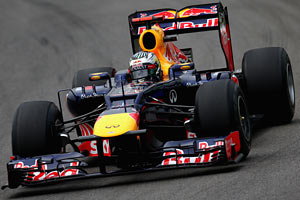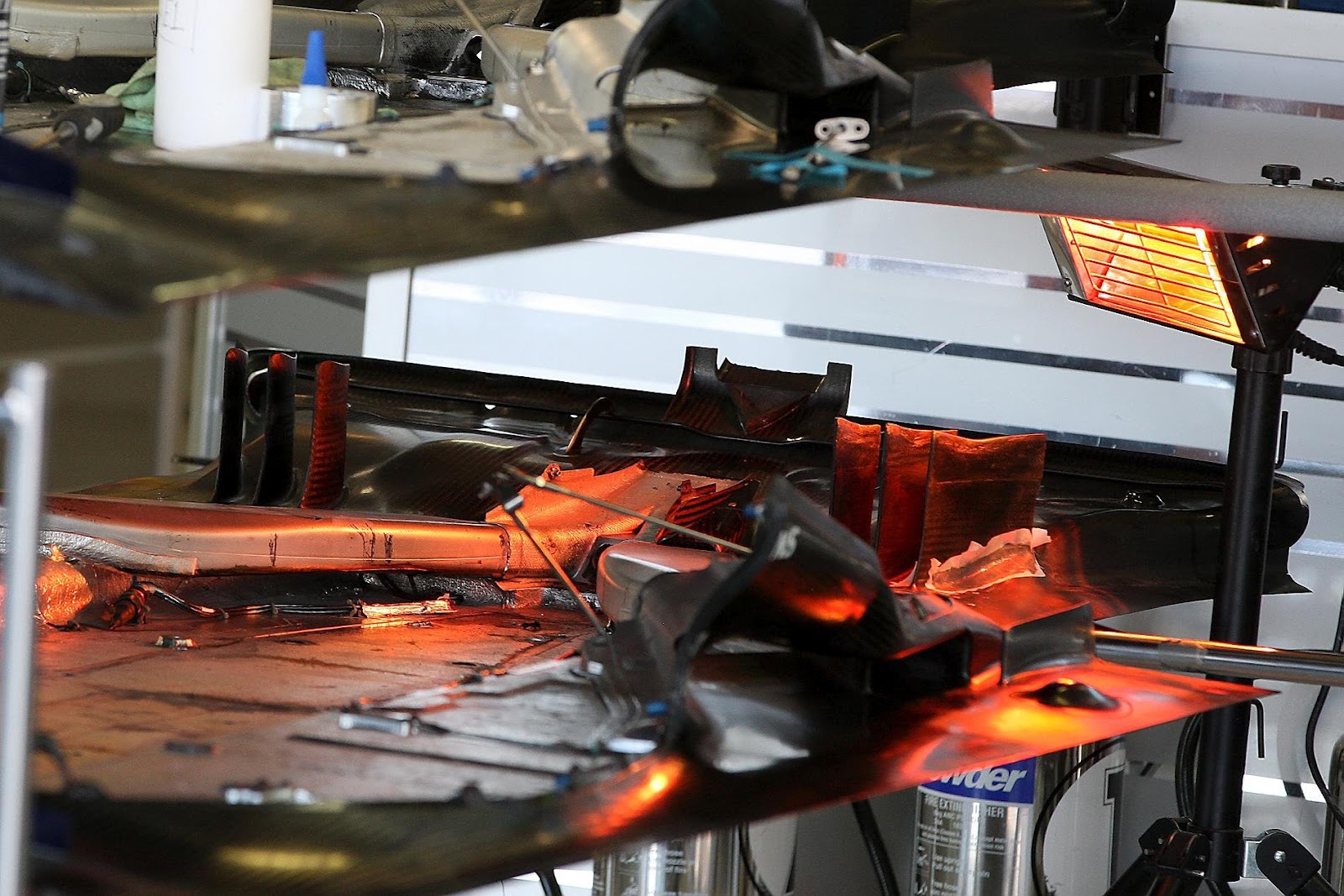Scarbs article from Autosport (subscription section)
Despite only being denied a third victory of the season in Valencia by unreliability, Red Bull is still struggling with development of its RB8.
Normally, it is the team that sets the design direction for the rest of the grid, but this year its exhaust solution has left it trailing. Not since 2009 and the double diffuser upgrade has Red Bull had to make such major updates to the car mid-season.
For Valencia, the team had another version of its exhaust\sidepod solution. This was a return to the bridge\tunnel concept first seen on the Melbourne-specification car.
Not only did the RB8 have new sidepods for the European Grand Prix, but also revised suspension, brake ducts and other aero parts.
Red Bull's decision to test its Melbourne exhaust solution in pre-season testing backfired when the system didn't deliver the results expected. Since then, it has tested several iterations of sidepod\exhaust, even returning to the launch specification for Vettel in China.
It is this tunnel solution in the sidepod that seems to promise the results Adrian Newey's design team are looking for, but it has its problems.
New rules brought in for 2012 banned the lowline exhausts used last year to create more downforce by blowing directly into the diffuser. Teams have sought to regain this blowing effect and the most popular design appears to be McLaren's, where the exhaust exits from the side of a short sidepod through a deep duct. The exhaust plume follows the downward line of the duct and the airflow over the sidepod further presses the plume back down towards the diffuser. Having the exhaust blow along the flank of the diffuser helps to seal it which creates more downforce.
Conversely, Red Bull has its exhaust exit on the top of the sidepod and the bodywork behind the tailpipe forming a ramp, which the exhaust plume follows down towards the diffuser.
In comparison to McLaren's solution, which points the exhaust plume openly at the diffusers edge, the Red Bull ramp guides it directly to the diffuser. This design should be more accurate and suffer less loss in the exhaust plume's energy.
But this longer sidepod design prevents the airflow passing low around the sidepods from reaching the diffuser. To allow the exhaust plume and sidepod flow to crossover, Red Bull devised the tunnel set up to allow the sidepod flow to pass under the ramped bodywork. In the early versions, this 50mm high tunnel did not allow the flow to pass through it as expected. Flow appeared to be reversing back out of the tunnel at speed, and its intended benefit of blowing the centre of the diffuser was not realised. So from Bahrain, the tunnel was closed off.
The suspicion is that the tunnel was too low and its inlet had sharp edges, which combined to deter airflow from smoothly passing into it.
For Valencia, the tunnel has returned and again it's limited by the rules to a 50mm height. But its entry has a significant radius to allow more flow into the duct. This flow is then routed inside the bodywork to exit through outlets flanking the gearbox. This allows the flows to cross over and enable the exhaust to be more accurately directed at the diffuser.
Further aiding the downswept flow over the sidepod are two new fins, similar to those on the McLaren, on top of the sidepod fronts. These direct airflow over the exhaust outlet to help it point downwards at the diffuser.
At the back of the car, the rear suspension has been redesigned. The upper wishbone is shorter, bringing its mounting point well inboard from the rear wheel. This change will increase the tyre's camber change as the suspension moves, which is a method of increasing the temperature of the rear Pirellis. Accompanying the new rear upright is a new fin over the top of the brake duct area and a new shaped brake drum inside the wheel. Changes have been made to the lower wishbone as well, which is shaped to fair-in the driveshaft to reduce the drag the rotating driveshaft creates.
With this solution potentially offering more downforce and less tyre wear, the prospects look good for Red Bull. As it not only improves one-lap pace in qualifying but also in the race with better tyre management.
Gary Anderson on the updates
Their performance at Valencia in 2010 and 2011 owed a lot to the Red Bull's rear-end stability, which was due to the downforce-boosting exhaust-blown diffuser technology that they pioneered and exploited better than anyone else.
That has been banned for this year, but teams are still trying to harness exhaust gases for aerodynamic effect and Red Bull have made some pretty significant changes to their car for Valencia this weekend in this area.
Since the start of the season, Red Bull have had a slot or duct in the rear floor, just ahead of the rear tyre. They have been playing around with it, and blocking it off for some races.
That is back for this race but in a different format - it now connects up to the diffuser, managing the airflow better in and around the leading edge of the rear tyre, sucking it into the low-pressure area in the diffuser and creating downforce.
Another big change is forward of that, in the rear sidepod design. It looks as if someone has sat on it - the top has been squashed down so it is much lower.
An important part of the modification is the hot air from the radiator - instead of exiting at the front of the rear tyre, it now comes out half way along.
That creates a sort of duct - which is good because you don't want that slow, hot air interfering with the fast, low-pressure air that creates downforce between the rear wheels.
These are pretty significant changes in how the team are trying to get the diffuser underneath the back of the car and the 'Coke-bottle' shape between the rear wheels above it talking to each other.
It's effectively trying to emulate the effect of the exhaust-blown diffuser, although it won't be nearly as powerful as that was.
That's not all - they also have a different rear wing endplate, little turning vanes on top of the sidepods like McLaren introduced a few races ago.
You'd have to say from watching practice that the changes are working well - Sebastian Vettel and Mark Webber were second and third fastest and the car looked strong out on the track.
There is a long way to go yet but if I had to say which team looked most in control at the moment, I would say it was Red Bull.
Good rear-end stability is really important at Valencia. There are a lot of braking zones from high speed into slow corners, and the drivers have to brake as they're turning into the corner.
If you have good stability, you can run the correct brake balance. If you haven't, you end up moving the brake balance further forward than is ideal to stop the rears locking up.
That's fine when you can brake hard and transfer a lot of weight on to the front. But as the tyres wear out, that becomes increasingly difficult. You can't transfer as much weight, so you tend to lock the front tyres more.




